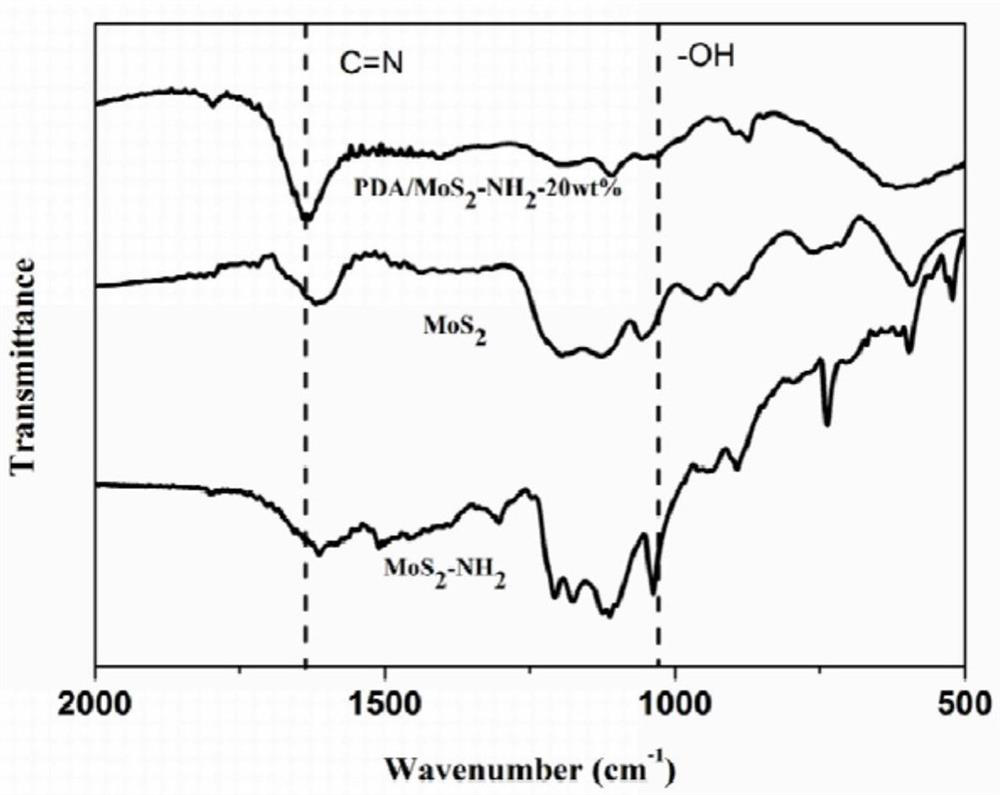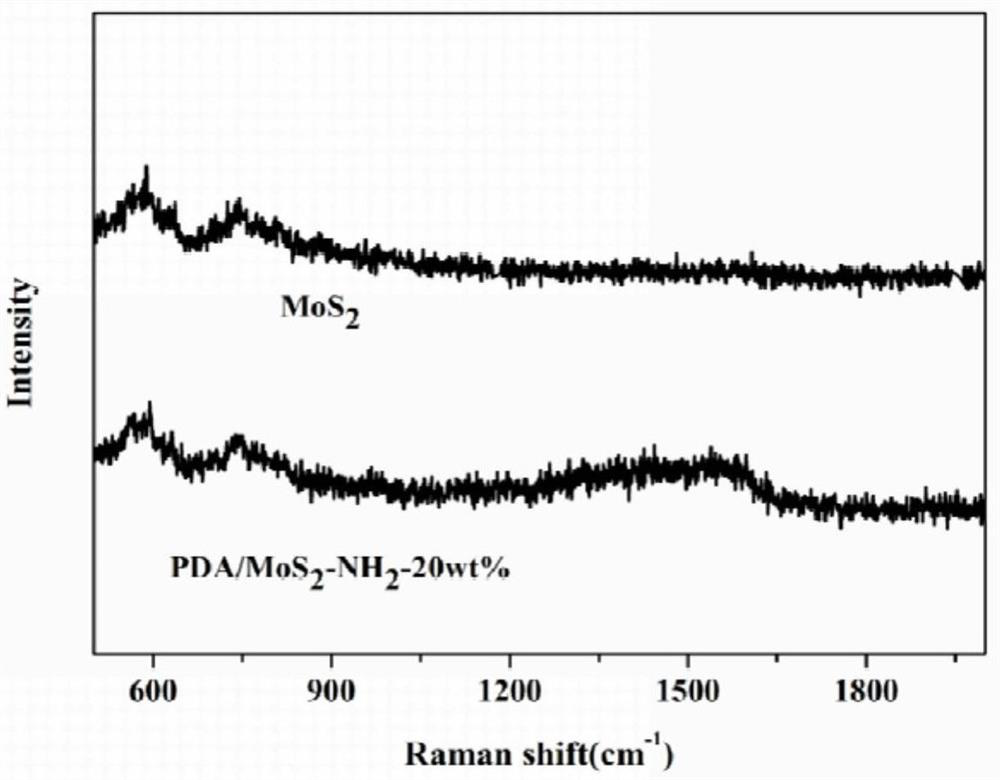A kind of preparation method and application of polydopamine/nanometer molybdenum disulfide photocatalyst
A technology of nano-molybdenum disulfide and molybdenum disulfide, which is applied in the direction of physical/chemical process catalysts, organic compound/hydride/coordination complex catalysts, chemical instruments and methods, etc., which can solve the problems of catalytic efficiency, carcinogenic risk, Complicated operations, etc.
- Summary
- Abstract
- Description
- Claims
- Application Information
AI Technical Summary
Problems solved by technology
Method used
Image
Examples
Embodiment 1
[0034] The preparation method of polydopamine / nanometer molybdenum disulfide photocatalyst in the present embodiment is as follows:
[0035] 1. Preparation of lamellar molybdenum disulfide
[0036] Add 1g of molybdenum disulfide powder into a three-necked flask, then add 10mL of n-butyllithium, stir for three days under a nitrogen atmosphere, filter after the reaction is completed, wash with 100mL of n-hexane for three times, and put the product obtained by suction filtration into a constant temperature at 60°C Dry in a drying oven for 4 hours, dissolve the dried powder in 250 mL of deionized water, disperse ultrasonically for 12 hours, and then freeze-dry at -50°C for 24 hours to obtain lamellar molybdenum disulfide;
[0037] 2. Preparation of aminated molybdenum disulfide
[0038] Disperse 0.7g of lamellar molybdenum disulfide in 200mL of deionized water, add 4mg of mercaptoethylamine, ultrasonically disperse for 48 hours, then freeze-dry at -50°C for 24 hours, wash with de...
Embodiment 2
[0043] The preparation of this example Guo Chen communicated with Example 1, the difference is that the mass of dopamine is 10% of the mass of aminated molybdenum disulfide, and the obtained polydopamine / nanomolybdenum disulfide photocatalyst is recorded as PDA / MoS 2 -NH 2 -10 wt%.
Embodiment 3
[0045] Preparation of this example Guo Chen communicated with Example 1, the difference is that the mass of dopamine is 20% of the mass of aminated molybdenum disulfide, and the obtained polydopamine / nanomolybdenum disulfide photocatalyst is recorded as PDA / MoS 2 -NH 2 -20 wt%.
PUM
 Login to View More
Login to View More Abstract
Description
Claims
Application Information
 Login to View More
Login to View More - R&D
- Intellectual Property
- Life Sciences
- Materials
- Tech Scout
- Unparalleled Data Quality
- Higher Quality Content
- 60% Fewer Hallucinations
Browse by: Latest US Patents, China's latest patents, Technical Efficacy Thesaurus, Application Domain, Technology Topic, Popular Technical Reports.
© 2025 PatSnap. All rights reserved.Legal|Privacy policy|Modern Slavery Act Transparency Statement|Sitemap|About US| Contact US: help@patsnap.com



